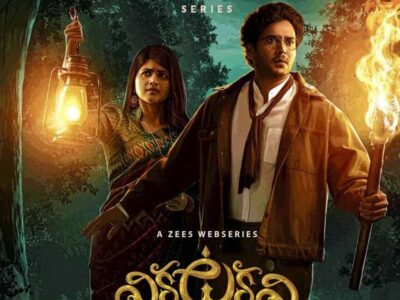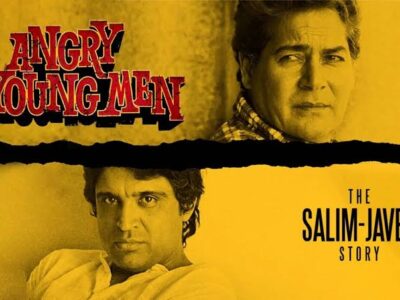Adolescence wants to be a searing, hard-hitting drama about modern youth – and in being so it gained widespread applause and is being projected as the best thing that happened in the space – Mudita Suresh Sonawane begs to differ. In a landscape where Indian and global television has already tackled similar themes with more nuance, Adolescence comes off as disappointingly shallow – she says
Review of Netflix’s Adolescence
Netflix’s Adolescence wants to be a searing, hard-hitting drama about modern youth, but in my opinion, what it delivers is something far less impactful. Despite its premise, the series falls back on a tired, male-centric perspective that reduces its narrative to a procedural crime drama, failing to explore the deeper, more uncomfortable truths about gender, violence, and the digital age.
In a landscape where Indian and global television has already tackled similar themes with more nuance, Adolescence comes off as disappointingly shallow.
One of the biggest failures of Adolescence is its refusal to fully engage with the victim’s story. The show is overwhelmingly focused on the boys accused of a crime, their legal battle, and the public discourse surrounding it—but where is the victim in all of this? By keeping her largely invisible, the show robs its own narrative of emotional weight and empathy. Instead of a layered exploration of justice, trauma, and societal reckoning, we get yet another drama that treats gender violence as a backdrop for a legal thriller.

The series briefly nods at online bullying but doesn’t really grapple with how young men fall into toxic online spaces that breed misogyny. The result is a surface-level portrayal of radicalization that never interrogates the social systems that drive boys toward these ideologies.
For a much stronger take, series like 13 Reasons Why and Euphoria dive deep into the digital ecosystem that warps young minds. AlRawabi School for Girls deserves a special applause, as it shows the violent nature of digital ecosystems within a setting where girls from various socio-economic status interact.
Adolescence plays it safe, offering none of that complexity.
Instead of blending procedural storytelling with real emotional stakes, Adolescence gets lost in its own investigation. It is, as if the writers were more interested in legal arguments than in the raw, human consequences of the crime. Shows like Broadchurch and I May Destroy You prove that crime dramas can be devastatingly effective when they balance investigative work with personal storytelling. But Adolescence seems almost afraid to sit in the emotional discomfort of its subject matter, resulting in a show that feels more like a courtroom case file than a compelling narrative.
There’s also an undercurrent of cis-heteronormativity in how Adolescence presents its gender politics. It leans into a rigid, almost punitive radical feminist, or should we say, trans-exclusionary radical feminist (TERF) stance, framing all men and boys as potential aggressors while ignoring the spectrum of gender identities and experiences. Instead of challenging harmful gender norms, the show ends up reinforcing another kind of rigidity, one that erases important conversations rather than fostering them.
In a world where we’re increasingly acknowledging mental health struggles among men, this omission feels both irresponsible and lazy. Shows like Mare of Easttown manage to discuss misogyny while still allowing male characters emotional depth. Sharp Objects goes a step further, portraying how women can be abusive, breaking away from the simplistic victim-perpetrator binary.
Even if we keep aside the reductive stance by Adolescence, the drama is not even staying true to its so-called feminist perspective. For example, the series tries to throw light on how Jamie looked up to his father, and in the concluding episode it shows Jamie’s family trying to live their routine life and deal with the harassment by locals post crime. The parents are shown to be wondering about what went wrong with Jamie’s upbringing, the father asking if they could do anything more to prevent the crime. In an average family, the housewife (and even working wife) is supposed to agree with whatever the husband/patriarch says, and Adolescence’s conclusion conveyed the same; the mother does not question Jamie’s choice for the appropriate adult during interrogation, or the male influence on his life while growing up.
Beyond the show itself, there’s something troubling about the people behind it. Key figures in its production, such as Stephen Graham, have well-documented associations with men accused of misogyny, including Johnny Depp, who has faced multiple allegations of domestic violence. This adds another layer of discomfort while considering the show’s stance on gender violence.

This raises the question: is this show truly about gender justice, or is it an exercise in opportunistic storytelling? At times, Adolescence feels more like a product trying to capitalize on social discourse rather than a sincere attempt to engage with it.
In contrast, major franchises like Harry Potter and Fantastic Beasts have seen creators and production teams distance themselves from figures embroiled in controversies related to misogyny and abuse. J.K. Rowling’s transphobic rhetoric led many actors from the Harry Potter series to publicly oppose her views, while Fantastic Beasts ultimately removed Depp from its cast following his legal battles. Yet, Adolescence appears to operate in the opposite direction, aligning itself with problematic figures rather than critically examining the cultural climate it attempts to comment on.
When I read the reactions of some of the prominent Indian figures in the industry such as Alia Bhatt, Hansal Mehta, Karan Johar, Anurag Kashyap, Sudhir Mishra, etc, I felt that while applauding Adolescence, they have unfairly compared Indian content and its audience only to dismiss them, ignoring the vastly different cultural contexts and complexities of genders, castes and classes in India (not that we expect anything less from them).
Notably, Anurag Kashyap slammed Netflix India for causing hurdles for approval, and claimed that it hinders Indian creators from making something like Adolescence. But holding this series as a “standard” and comparing it with Indian content is absurd. Ekta Kapoor took a dig at him by asking to blame the audience rather than the productions, which is, again, absurd and elitist.
Lately, Indian creators have already been delivering sharper, more socially aware narratives on various platforms. The uncritical endorsement of Adolescence actively contributes to the misguided glorification of Western media while overlooking homegrown brilliance. It also highlights the disconnect between Indian industry veterans, the evolving standards of storytelling, and the Indian society at large.
Series such as Kaalkoot, School of Lies, Adhura, and Murder in Mahim, are a few examples of storytelling that doesn’t just acknowledge the impact of patriarchy but also effectively portrays its effects across the gender spectrum.
In the end, Adolescence is a hollow attempt at relevance. It had the chance to dissect gender violence, online radicalization, and systemic injustice—but instead, it settled for a one-dimensional, incomplete, and frustratingly shallow narrative. It wants to be a conversation-starter, but all it really does is reinforce the same patterns of bad storytelling and misguided praise.
(The author is Asst. Professor (Physics) based in Mumbai)
















